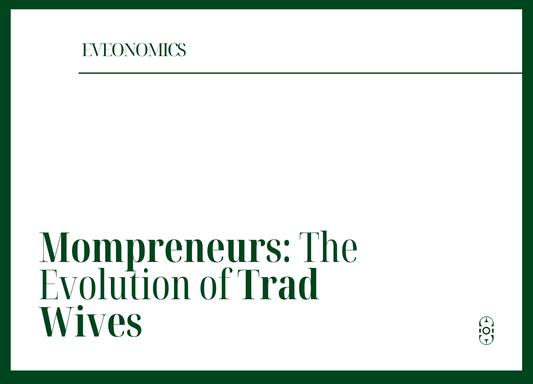The Industrial Revolution, spanning the late 18th to early 19th centuries, was a watershed moment in economic history. It introduced mechanisation, sparked mass production, and forever changed the fabric of society. But beyond its technological achievements, it quietly opened doors for a segment of the population often overlooked in wealth-building—women. Although the progress was incremental, the Industrial Revolution began to redefine the possibilities for women to engage in economic activities, generate income, and contribute to household wealth in ways that had been previously unthinkable.
Women Enter the Workforce: New Opportunities, New Challenges
Before the Industrial Revolution, women’s economic contributions were largely confined to the home or small, local industries like farming or textile production. But as factories began sprouting up in cities, there was a growing demand for labour, and women, especially young and unmarried women, became an integral part of this new workforce.
Take the textile mills, for instance. In places like Lowell, Massachusetts, thousands of women, famously known as the Lowell Mill Girls, worked in cotton mills, earning wages, and for the first time, participating in the cash economy. Although these factory jobs were grueling, with long hours and hazardous conditions, they represented a shift—women were earning wages they could control. This was an opportunity, albeit limited, for them to build some form of wealth or contribute to their family's financial wellbeing.
In essence, while the industrial workforce was far from egalitarian, it was a turning point for many women to exert some measure of financial independence, even if they were still bound by societal expectations and wage inequalities.
Entrepreneurship and Small Businesses: The Role of Women
Meanwhile, women who did not enter the industrial workforce found other ways to engage in wealth-building. Middle- and upper-class women, particularly those with access to some form of capital, began to take on entrepreneurial ventures. Whether through cottage industries—producing handmade goods such as lace, textiles, and pottery—or managing inns, small shops, or schools, women leveraged the changing economy to create their own sources of income.
Additionally, women often found themselves managing family estates or businesses, either because of their husbands' absence or death, or as an extension of their household responsibilities. This offered them a level of exposure to economic decision-making that was previously unheard of. Although legal barriers, such as coverture laws, still limited their formal ownership rights, the Industrial Revolution allowed women to increasingly operate as economic agents, contributing not only to family wealth but also to broader economic systems.
The Shift in Gender Roles
The increasing participation of women in the economy was not without its societal ramifications. For centuries, women had been seen primarily as caregivers, managing the home and raising children. The Industrial Revolution disrupted these entrenched gender norms, especially in urban centers, where women could be found working in factories, running small businesses, or managing property.
While this shift was significant, it wasn't revolutionary in the sense of overnight change. Women in the workplace often found themselves in lower-paying jobs than their male counterparts, with little opportunity for advancement. Nevertheless, the Industrial Revolution planted the seeds for more radical changes in the decades and centuries to follow. It showcased women's capacity for hard work, economic participation, and, eventually, the pursuit of wealth-building opportunities beyond the domestic sphere.
Legal Reforms and Economic Rights
The social and economic shifts of the Industrial Revolution also laid the groundwork for legal reforms. In particular, The Married Women's Property Acts, passed first in the United States and Britain, represented a landmark in women's rights. These laws allowed women to own and control property independent of their husbands, enabling them to participate more fully in the economy and build wealth in their own right.
In the UK, the Married Women’s Property Act of 1870 was a modest start, allowing women to keep their earnings and certain forms of inherited property. However, the more comprehensive Married Women's Property Act of 1882 expanded these rights, enabling married women to own, buy, and sell property. Similarly, in the United States, a series of property acts, beginning with Mississippi in 1839, granted women more financial autonomy.
These legal reforms were vital steps forward in ensuring that women could actively engage in wealth-building, free from the constraints of marriage laws that had previously rendered them financially invisible. These changes, though gradual, signaled the dawn of economic empowerment for women.
Feminism, Economic Independence, and Property Rights
As women gained more economic agency, they also began to advocate for broader rights, including suffrage and access to higher education. Leaders like Susan B. Anthony and Elizabeth Cady Stanton saw the connection between economic independence and political equality. For them, the right to vote, own property, and participate fully in the economy were intertwined, each a necessary component of the broader struggle for women's rights.
The women's rights movement saw the importance of economic autonomy, understanding that without control over their own finances and property, women would remain second-class citizens. The industrial era catalysed these ideas, offering new avenues for wealth-building, which women began to embrace alongside their fight for political enfranchisement.
The Global Ripple Effect
While women in Western nations were making strides, the effects of the Industrial Revolution and the accompanying legal reforms had ripple effects globally. In many developing nations, women continued to face severe restrictions on property ownership and economic participation, a struggle that persists today. However, the example set by women in industrialised nations, who had slowly begun to gain economic rights, became a beacon of hope and a model for women’s movements worldwide.
These shifts highlighted the essential role of property rights and legal autonomy in wealth-building, showcasing that financial empowerment is foundational to achieving gender equality. Today, movements in various parts of the world continue to fight for women's economic rights, drawing inspiration from the struggles and successes of women during the Industrial Revolution.
Conclusion: The Path to Empowerment
The Industrial Revolution was far from perfect, especially for women. It introduced exploitative labour conditions, and wage disparities persisted. However, it was also a time of profound transformation. For many women, it marked the beginning of a new era where they could engage with and contribute to the economy in ways they had never done before.
From factory work to entrepreneurial ventures, the Industrial Revolution gave women the tools to begin building their own wealth, challenging the existing social order, and setting the stage for future generations of women to fight for economic and legal rights.
Today, we continue to benefit from the progress made by these women, who defied societal norms and paved the way for greater financial independence and gender equality. The Industrial Revolution, with all its complexities, remains a critical chapter in the ongoing story of women’s economic empowerment.
*This article is for general information purposes only and is not financial advice. We are not licensed financial advisors. Please consult a qualified professional before making any investment decisions to ensure they fit your specific financial situation.





